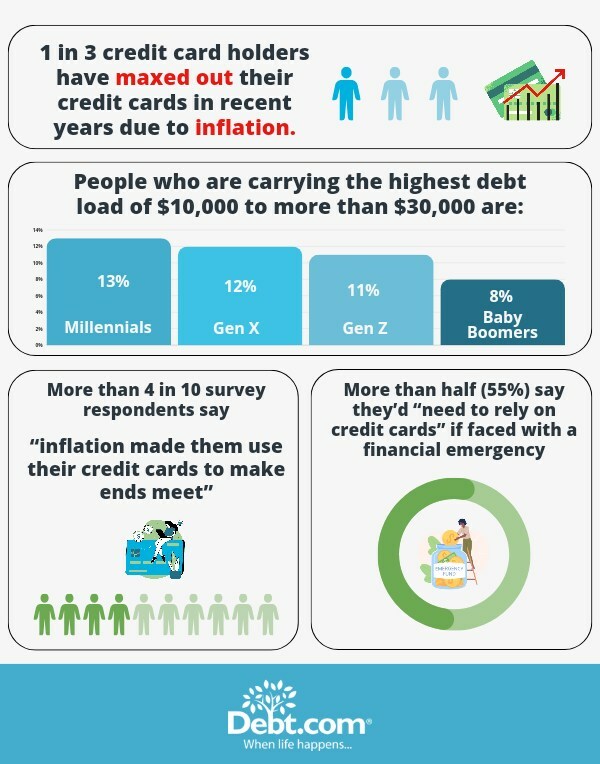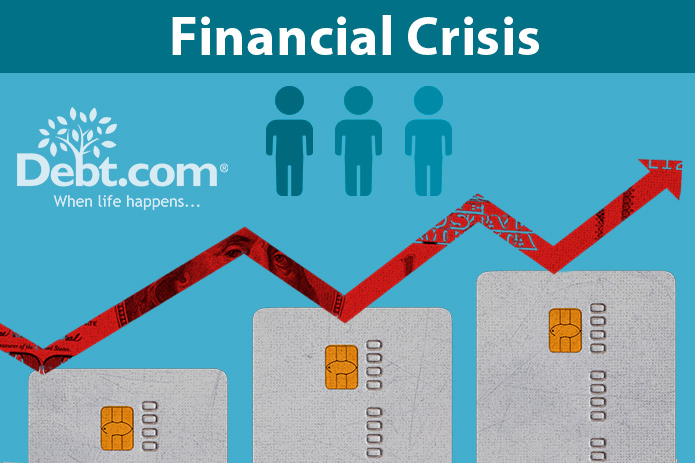
FORT LAUDERDALE, Fla., March 21, 2024 /Noticias Newswire/ — The United States has recently witnessed a historic surge in credit card debt, reaching a staggering $1.13 trillion.
According to Debt.com ‘s comprehensive survey involving over 1,000 adults, 35% of individuals have exhausted their credit card limits in recent years amidst rising inflation and interest rates. A significant 45% of survey respondents attribute their credit card usage to inflation-driven price hikes, reflecting the struggle to meet basic expenses. Additionally, nearly 9% of respondents resorted to acquiring a credit card to cope with unforeseen financial emergencies.
“The current economic scenario underscores the alarming escalation in credit card debt, underscoring the financial pressures faced by numerous Americans. With unprecedented levels of debt and a substantial portion of individuals hitting credit card limits, it’s evident that households are navigating through unique and challenging circumstances.”
Millennials’ Debt Nightmare: Overwhelming Credit Card Burden Hits Young Adults Hard
Thirty-one percent of respondents with at least $10,000 to $20,000 of credit card debt are millennials, while those carrying the highest debt load of $20,000 to more than $30,000, 13% are also millennials. “Inflation and escalating living costs are forcing individuals to rely on credit cards as a lifeline. While credit cards can offer temporary relief, accumulating debt at a rapid pace is unsustainable and can lead to long-term financial repercussions. People need to exercise caution and seek alternate financial strategies to navigate these turbulent times,” Dvorkin continues.
Parental Influence: How Family and Retailers Shape Americans’ Credit Card Habits
When respondents were asked who introduced them to their first credit card, 32% said their parents, while 26% said retail stores offered them the first credit card and 12% said it was their school, university, or college. “It’s enticing when we get those credit card offers, and exciting to get that first card; but cash is still the best way to pay. Anything you buy, try to pay cash. If you must use your card, pay off the balance the following month when the bill comes or you’ll end up paying interest; and consumers are being assessed interest rates on credit card balances at about 20%-25%,” said Dvorkin.
Debt.com’s Historical Perspective: Slowly Getting Better
Since 2018, Debt.com has polled Americans about credit card debt. While life today is very different from that pre-pandemic era, credit cards are just as stressful. For example, this year 35% reported maxing out their credit cards, which is a big improvement from five years ago, when just over half (50.08%) had hit their credit limit and three years ago, it dropped to 43%.
To read the rest of the survey findings please visit: https://www.debt.com/research/credit-card-survey.





